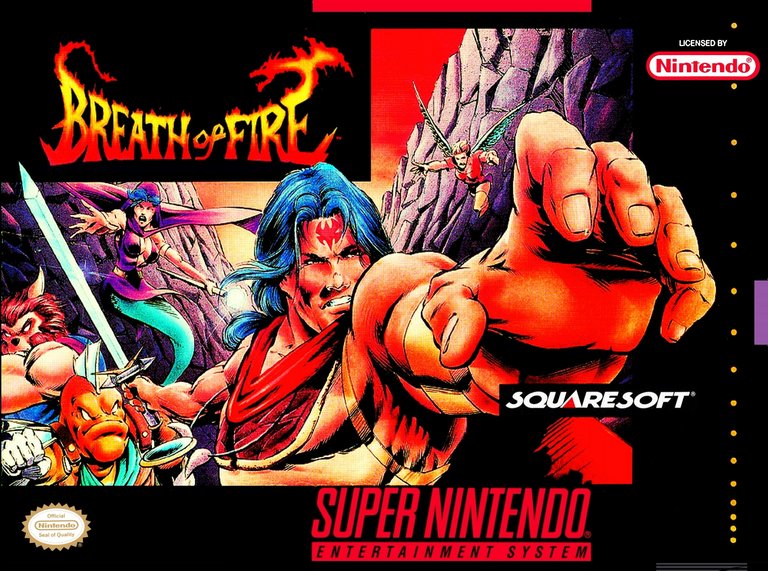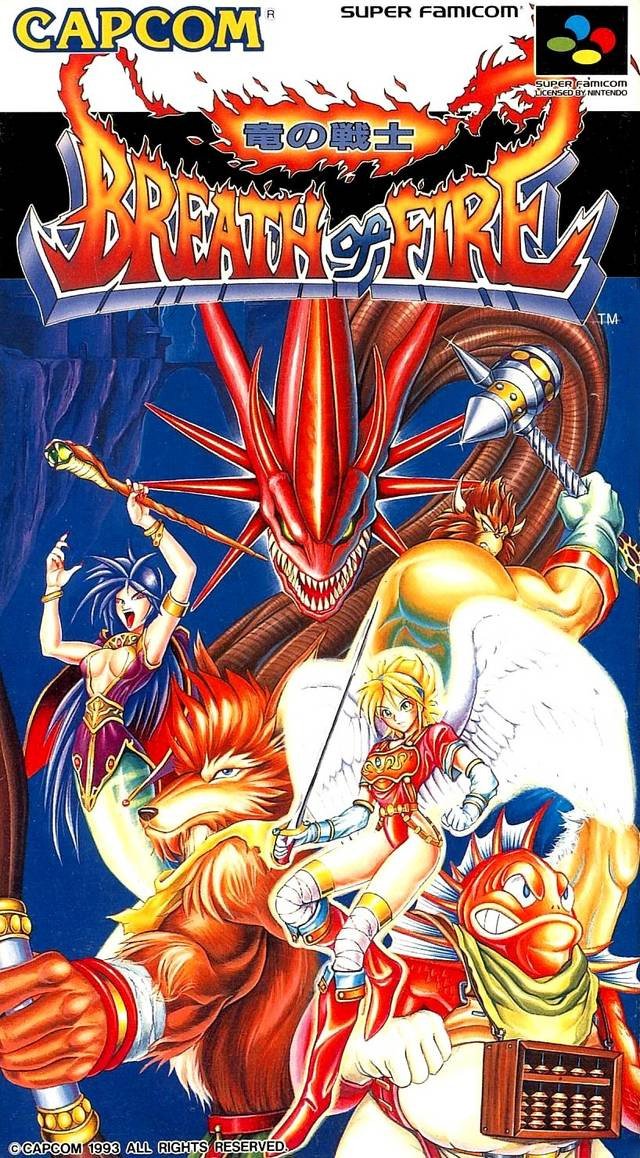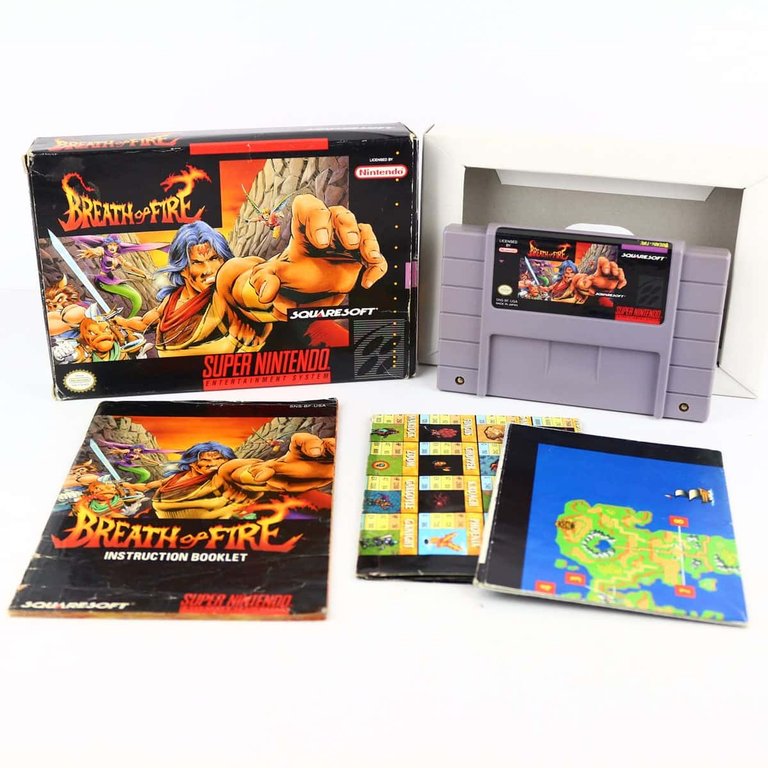My Played Video Games Review: Breath of Fire for the Super Nintendo

Breath of Fire is a role-playing game created by Capcom of Japan and launched for the Super Nintendo/Super Famicom. The game first debuted in Japan in April 1993, and Square Soft took charge of its English translation and release in North America in August 1994. The game marks the beginning of the Breath of Fire JRPG series.
As Capcom's first traditional RPG, Breath of Fire was the foundation for what would become the signature style and structure of future games in the series.
When people think of Capcom, the first things that usually come to mind are fighting games like Street Fighter or action-packed titles like Mega Man. Nowadays, Resident Evil has probably got into that list too. However, RPGs are not usually associated with the company. Despite that, Capcom did venture into the world of RPGs, beginning with Breath of Fire; a title that many retro RPG gamers consider usually as one of the most underrated RPGs on the SNES.

The Story
In ancient times, during an era of dark mystery and magic, a young wanderer encounters his destiny. You take control of Ryu, a young brave warrior and possibly last heir of the Light Dragon Clan. With the help of your mystical ally, Nina, you go on a quest to discover powerful spells and unravel those hidden mysteries. As you travel, you will gain experience and grow stronger, facing off against horrible creatures. Along the way, you will uncover vital secrets that will aid you on your quest and discover surprising revelations about the Dragon Clan.

The Graphics and Sound
Visually, the game shows its age from the start, and even back in the mid-1990s, it is a bit outdated compared to other games of the time. The towns are fairly simplistic, the overworld is lacks in detail, and the battle backgrounds can be described as bland/boring. However, the game looks good in its character and enemy sprites. Both are nicely detailed and vibrant, with characters and enemies standing out due to their larger size and rich colors. Things get a bit more better when you unlock the hero Ryu's ability to change into various dragon forms or use his team mate Karn’s fusion ability to combine other party members. They result in some visually unique sprites. The soundtrack is one of the game’s standout features, leaving a fine impression. It offers a wide variety of tracks, from sad and melancholic to lively and upbeat tunes. One can note the battle theme, which you will hear many times throughout your playthrough. Despite this repetition, it holds up pretty well. While it may not surpass those legendary titles like Chrono Trigger or Final Fantasy 6 in terms of great memorable battle music, it really really ranks among the better RPG soundtracks of the 16-bit era. A track like "Dejection", for example, is so beautifully composed that you might even find yourself listening to it outside of the game, with its bittersweet and emotional notes. The boss battle themes also do a wonderful job of creating the tension and excitement you expect from enemy encounters, enhancing the overall atmosphere of the game.
The Gameplay
In some ways, Breath of Fire is like a typical RPG. You have health points (HP) and take part in turn-based battles with a party of four characters. But there are some unique differences.
For starters, instead of using MP (magic points), this game uses AP (ability points). While this change is minimal, the amount of AP you can have is much larger than usual than in other RPGs, reaching up to 9999. This allows freedom to cast spells without worrying too much about running out of those points.
Another new interesting feature is the character switching. In most RPGs, you are stuck with the same characters throughout a battle, but the game lets you swap them in and out almost any time during battle, adding more flavor to your strategies.
The game also includes Dragon Changing and Fusing. The hero can turn into a dragon after some training, using AP to fuel the transformation. The mightier the dragon, the more AP it costs. Fusing, on the other hand, allows a team mate named Karn to merge with other characters into one, combining their abilities.
A pretty cool feature also in the game is the life gauge system. When you hit an enemy, you can see their health bar, which helps you on estimating how close you are to defeating them. However, you can not see the exact numbers, so if you are not paying attention, your own heroes might get knocked out before you notice their low health.
The damn boss battles also have a twist. After sucking a boss's health completely, they often come back with some health restored and stronger powers. This means you have to be prepared for part 2 of the fight.
Overall, Breath of Fire offers a a good, decent challenge and reasonable length for an RPG.
Most RPGs often struggle with replay value, and Breath of Fire is no different. Most RPGs are damn too long to replay many times, and while it is a great game, it likely won't be something you'll want to play repeatedly unless you're a big fan or want to discover all its secrets.
My Verdict
Breath of Fire is a solid game. It is surprisingly enjoyable, and the music is just great. While the other games in the series may have left it behind, this one still has a certain charm that makes it stand out.
Play it on the quite valuable Super Nintendo/Super Famicom or play it on a trusty good emulator.
Let's keep on gaming in the free world!

Please vote for Ecency proposal👇
https://ecency.com/proposals?filter=team
Done!👍🙂👍
Some parts of the posts shows "AI generated". That's against the community rules. What do you say?
Check it again. I sometimes use AI to correct some of my own grammar on this post to avoid sounding repetitive. Please point out the parts and I will edit to reword it.
Breath of Fire is a good old school classic of the RPG genre. Something I really liked was its narrative that ended up being very immersive and its characters are simply unique and memorable.
Good memories unlocked bro.
I wanted to grab this one at release but for some reason the local EB and Software Etc (my places to get games) had this priced $10 higher than other similar games. I understood RPG's often cost more as they cost more to make but this was higher than the other RPG's out at the time.
I waited for it to go on sale but when it did others had grabbed the two copies each store had available and they were not planning to replenish it.
This is one I will probably have to emulate in order to play.
Classic 16-bit RPGs are notorious in making you grind to get from point A to Point Z. Good luck.🙂
I remember the days I spent grinding in Phantasy Star IV and Might and Magic to get anywhere. I hated it but it made up so much of my gaming time back then. I came into console RPG's from the mid 80's computer RPG's - those were freaking brutal at times.